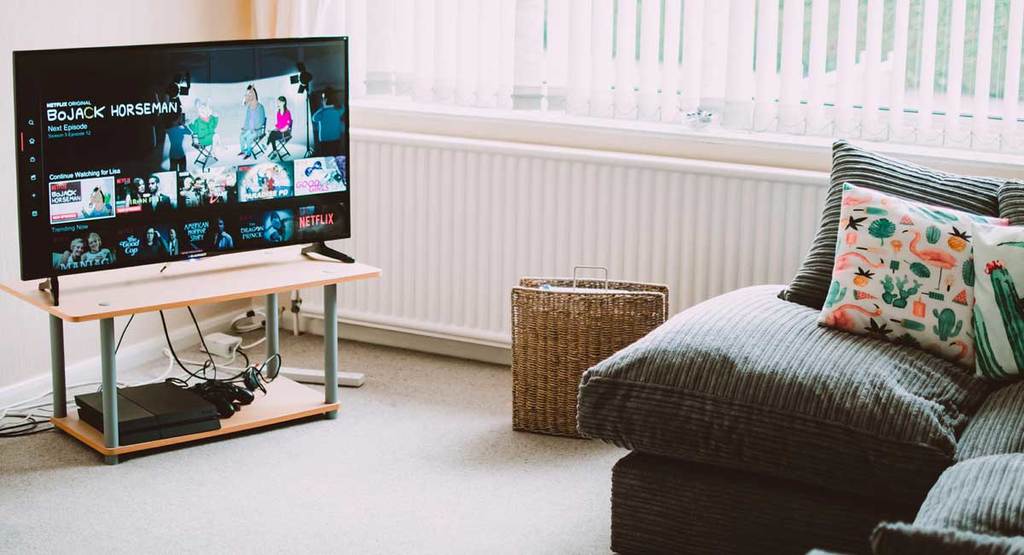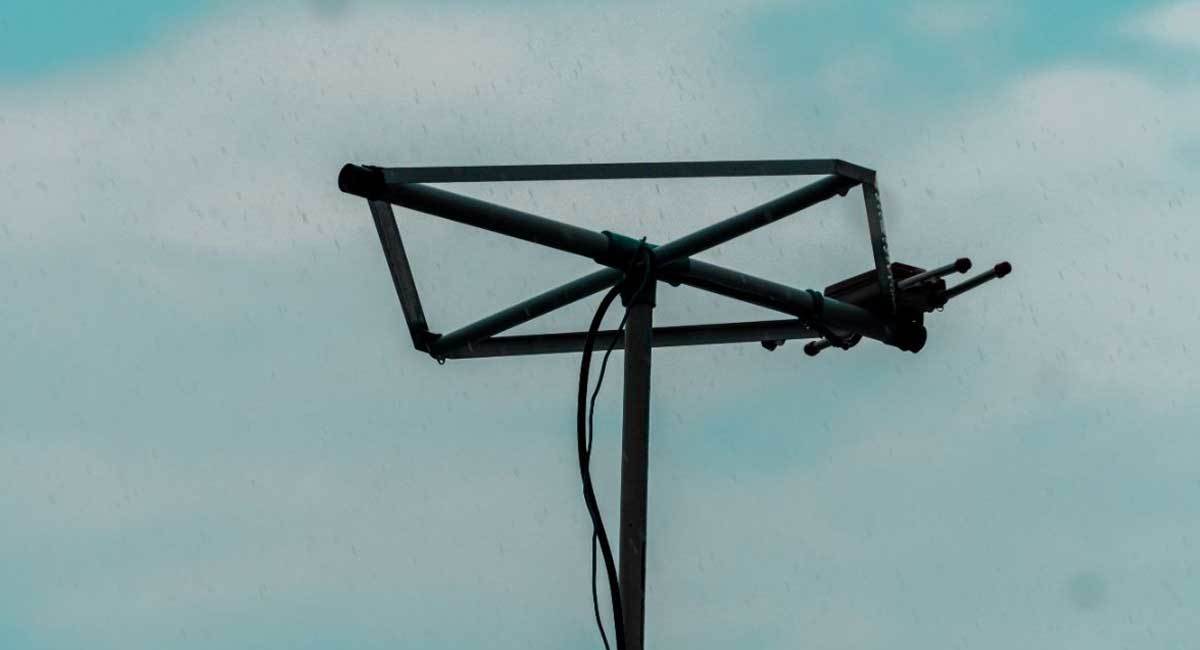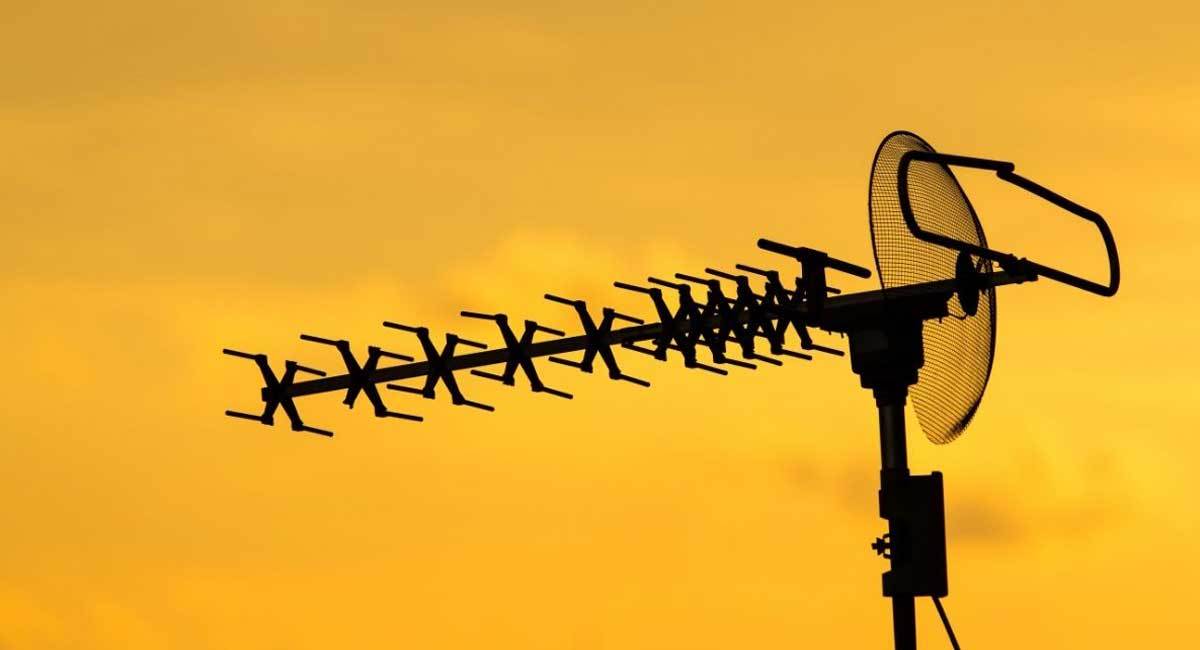- You are here:
- Home »
- Blog »
- Pillar Article »
- How to Hook an Antenna Up to a Digital TV

How to Hook an Antenna Up to a Digital TV
Imagine literally severing your ties with cable companies. Free air channels on your digital TV may not provide all the channels that you want. Other people don’t want to be restricted to the local programs and news they can get without cable.
What do you have to do to watch what you want and still get rid of the cable subscription? The answer is simple: learn how to hook up an antenna up to your digital TV, and enjoy quality TV for free.
Yes, TV antennas are still used in households. They still bring you the crisp broadcasting of TV channels that are transmitted over the air, just as they did before satellite and cable.
The only difference with modern antennas is that they use superior technology. Antenna function has improved so much that they can deliver a better picture quality than cable.
Antennas work flawlessly with ordinary analog and digital television sets, but what if you have the latest smart TV? Smart TVs have an inbuilt computer and TV complete with PlayStore and internet capabilities.
A smart TV streams videos, is capable of surfing the internet, downloads, and interacts with apps. Will an antenna work on this kind of TV?
Let’s explore the options.
Hook an HDTV Antenna to a Digital TV
A TV antenna can be used with all kinds of real television sets, including smart TVs. We make the distinction of real television sets because there are devices on the market that look like they could be TVs, but they aren’t.

Non-TV devices are missing one crucial component that televisions must have: an ATSC tuner. An ATSC tuner receives the antenna signal and changes it into the picture and sound that you see on your television.
How can you tell if you have a non-TV device? The easiest way is to check your TV’s documentation or packaging. If the product doesn’t have the name “TV” in its description or or the packaging label, it’s not a real TV.
You can also look at the back of the device for the coax cable connector, (F-connector). This connector is round with threads outside. Sometimes it is labeled as “cable in” or “antenna”.
Rear Panel Antenna Connection
If your set has a coax cable port, you are all set to install an antenna.
Even though digital TVs can be highly advanced, e.g. the Smart TV that comes with a Web 2.0 interface and support for an array of features, they still retain the conventional functions of TV sets.
If you have a non-TV device with a missing ATSC tuner, you can still use an antenna with a few modifications. Bypass the missing internal ATSC tuner by purchasing a converter box. The box comes with an external tuner that makes up for the job that the internal tuner is supposed to do. The converted box connects to the almost-TV device via an HDMI cable.
Which Antenna Do You Need For a Smart TV?
Any antenna will work with your smart TV. Some, however, work better than others.
Choosing an antenna that is compatible with your TV is a walk in the park, even indoor rabbit ear antennas can do the job. However, if you want an antenna that gives better picture quality than cable and more broadcast channels, look for long-range outdoor antennas.
The range of coverage is important, as you probably live far away from some of your local broadcasting towers.
Why Should I Use an Antenna for a Digital TV?
According to the mandate by the Federal Communications Commission, over-the-air (OTA) TV channels are free for anyone who wants to use them.
If you currently use cable, you will see that these OTA channels are listed among the programs. However, they do not own them, they are simply repackaging the freely available channels.
Whereas your cable service provider may raise the cost of your subscription, the OTA channels will continue to be free. All you need is an antenna.
Want more reasons to use an antenna with your digital television?
- All the stations are free, which means you’ll have one less monthly bill
- It’s fun to watch local and regional football games with friends on TV
- There are an array of broadcast signals floating around in the atmosphere
- The quality of antenna signals is much better than cable
- Once you have installed the antenna, there are no monthly costs
Antenna signals are better than cable signals because there is less compression. Over-the-air TV broadcasts on both the VHF and UHF frequencies and uses channels 2 through 36.
By contrast, cable transmission has hundreds of TV channels that it tries to squeeze into one range. A TV antenna transmits fewer channels over the same range, resulting in less compression and better quality signals.
How Many Channels Will I Get with an Antenna?
Back in the days of analog TV, most of the channels broadcasted were VHF and the UHF signals, which were quite limited. This has changed with the invention of digital television.
- VHF broadcasts on radio frequency channels 2 – 13
- UHF broadcasts on channels 14 – 36
- There are 33 broadcast channels available with many more TV channels
If you want an idea of the kind of channels you will get before purchasing an antenna, you can find out from TV Fool. Enter your location to get a list of channels broadcasting in your area. Entering your address or zip code will help the site map your distance from local transmission towers. It will tell you how many channels you’d get and the strength of signals that can get to you. It also tells you the direction you should point your antenna.
Do I Need an Indoor or Outdoor Antenna?
The correct choice is dictated by your distance from the transmission towers. The rule of thumb is that if you are located within 15 to 20 miles of the local transmission tower, an indoor antenna will suffice. You have to be within 15 miles of a tower for premium reception with an indoor antenna.

If you are further than 15 miles from the local transmission tower, you need an outdoor antenna. A rooftop antenna works within a range of 60-80 miles. If you need more miles, elevate the antennae higher on your rooftop.
How to Hook an Antenna Up to a Digital TV
It doesn’t take much to connect an antenna to a digital TV. All you have to do is to locate the F-connector at the back of the set. We mentioned this connector earlier in the article. Find a round port labeled “antenna” or “cable in” and attach the coax connector to it.
If you opt for an indoor antenna, use it close to the set. The antenna cable that comes with it connects to the television set. If you are installing it further away from the TV, you will need a high quality coax cable.
Antenna Placement
Indoor antennas are best placed at a window that faces the direction of the transmitting towers.
If you don’t find the best spot within your house right away, keep adjusting the antenna’s position until you get the clearest picture. A small adjustment to the antenna positioning can make a huge difference.
Placement for an outdoor antenna is much easier due to less interference from indoor electronic transmissions. However, outdoor placement is also subject to some trial and error.
The solution is to know the general direction your TV transmission will come from, and whether your antenna is unidirectional or omnidirectional.
One Antenna, More Than One TV
If more than one TV in different rooms of the house are sharing one antenna, use a coax splitter to feed the signal to each set.
A signal splitter is a metal box with a port on one side and two or more ports on the other side. The single port receives the coax cable from the antenna, while the other ports take multiple coax cables to the TV sets.
A few things to note before getting a splitter:
- Choose a splitter with the exact number of connectors you need. Don’t buy one with more connectors in anticipation of using it in the future.
- The signal loss resulting from a splitter is minimal. You likely won’t notice a difference if you’re only using it for two television sets.
- To test the extent of signal change, unhook the splitter and note the number of channels and your picture quality. Then reconnect the splitter and note the degree of change.
Conclusion
Using an antenna with your Smart TV gets you an array of great programs without any monthly charges. The advantage of an antenna is that once it is set up, you will get several years of great service.
The initial costs of buying and setting up an antenna with the help of a professional may equal about two months’ subscription fee for cable. But once you learn how to hook an antenna up to your digital tv, your local channels can compliment the viewing you get from streaming apps and your favorite shows at no additional cost.
Related Posts
How to Improve TV Antenna Signals
How to Boost Outdoor TV Antenna Signal in 6 Easy Steps
How to Install an Outdoor Antenna — A Step By Step Guide
Tips on How to Boost Indoor Antenna Signals
Let’s Compare: Antennaweb vs TvFool
Guide on How To Boost TV Antenna Signal Homemade
How To Aim Your TV Antenna For Maximum Reception
How to Ground a TV Antenna Correctly

